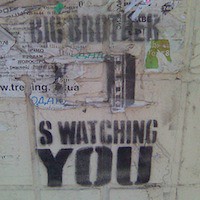Drake Goes Around the World

“ … I was told we’d cruise the seas for American gold;
We’d fire no guns, shed no tears;
I’m a broken man on the Halifax pier,
the last of Barrett’s Privateers!”
Those lines are the last few of the chorus to a sea shanty called “Barrett’s Privateers.” The song tells the story of a young man who set sail with a man named Barrett on a boat called the Antelope. It details the trials and tribulations and his “broken-ness,” which is him without legs.
Privateering, started by Henry VIII, allowed the sovereign of a nation to grant a “letter of marque” to a ship owner during times of war for that ship to seek out vessels of an enemy state and loot the ships. It was considered an act of war and gave nations the ability to conduct naval battles. However, by the 16th century, the practice was abused by most nations. It became a way for the sovereign to get around having to build a navy. By the Elizabethan era, privateering was little more than licensed pirating. Such was the case with one of the most notable and famous privateers, Sir Francis Drake.
Drake was a passionate and loyal Englishman. Whenever he committed his acts of piracy, it was in the name of Queen Elizabeth and under the flag of St. George. The enemies of England were his enemies. At that time, the enemy of England was Spain.
December 13, 1577, saw Drake leaving Plymouth in England for South America. He had his ship and four others with him. Three of the four ships accompanying him were either abandoned or lost by September 1578, and the fourth lost contact with him during a storm and returned to England. By that time Drake’s ship, the Golden Hind, had weathered the Strait of Magellan. He plundered and looted along the Chilean coast and overtook several Spanish ships while there. In March 1579, he intercepted the Spanish galleon Nuestra Señora de la Concepción. This ship was laden with treasure from Peru, sailing from Lima to Panama. Because of the vast amount of treasure on this ship, she was heavily armored to avoid being attacked by pirates.
The Spanish galleon had the nickname Cacafuego due to the heavy armor she bore. Drake did as other pirates of the day and disguised the Golden Hind as a merchant vessel. The Spanish captain was indeed fooled by the guise and when the ships came within hailing distance, demanded the destination. Drake responded with, “Strike sail or we will send you to the bottom!” Of course, the Spanish captain was not about to yield to what he supposed was a merchant vessel; he demanded Drake board his ship and surrender.
At the sound of the horn, Drake’s men arose from their hidden battle stations and opened fire on the Cacafuego. The first round of fire took out the mizzenmast of the Spanish ship and was followed by a round of arrows. This allowed the Golden Hind to come alongside the Cacafuego so that Drake’s men could board the Spanish ship. The Spaniards were taken captive and brought on board the Golden Hind. Drake, however, had become very well known for his kindness to his men and prisoners. He comforted the Spanish captain and told him not to distress himself – such were the fortunes of war.
His men took the Cacafuego to a secluded coastal area to loot the cargo. The total sum of the treasures on board the Spanish galleon amounted to approximately 762,000 pesos (equivalent today to about £12 million). It took his men six days to transfer the loot from the Cacafuego to the Golden Hind. Even though he gave gifts to the Spanish captain and crew, the Spanish authorities were still quite livid when they learned the full impact of the damage inflicted by Drake. Spanish ships along the coast of America were on the lookout for him, so he very wisely headed west to the Pacific Ocean.
On September 26, 1580, Drake returned to the port of Plymouth having circumnavigated the globe – a voyage that lasted two years and nine months, and perhaps one of his most lucrative voyages ever. His ship was the second to complete a voyage around the globe – Magellan’s was the first, but Magellan died during the pioneering voyage. Drake was the first commander to complete such a feat. He recounted his adventures for the Queen and she knighted him on the deck of his ship. She granted him £10,000 for himself and £8,000 for his crew; the rest went to the investors (herself included) of the voyage. In 1580, the estimated value of the trip was around £500,000 – by today’s standards, that was approximately £68 million.
Acts of privateering still occur today. In fact, the U.S. Constitution makes allowances for Letters of Marque in Article I, section 8. The 9/11 attacks were considered acts of air piracy and, therefore, appropriate measures needed to be employed. Under the Constitution, Congress maintains the right to declare war, and letters of marque fall under the “enumerated” powers. For more information on letters of marque and reprisal for the 9/11 attacks, visit Progress.org.
All historic information in this article comes from the book Under the Black Flag by David Cordingly. The book itself is a wonderful historic account of pirates throughout the ages. You can purchase a copy here.
You Should Also Read:
First in Space - Yuri Gagarin
First Man on the Moon
Dolly - First Cloned Mammal

Related Articles
Editor's Picks Articles
Top Ten Articles
Previous Features
Site Map
Content copyright © 2023 by Christa Mackey. All rights reserved.
This content was written by Christa Mackey. If you wish to use this content in any manner, you need written permission. Contact Lane Graciano for details.







